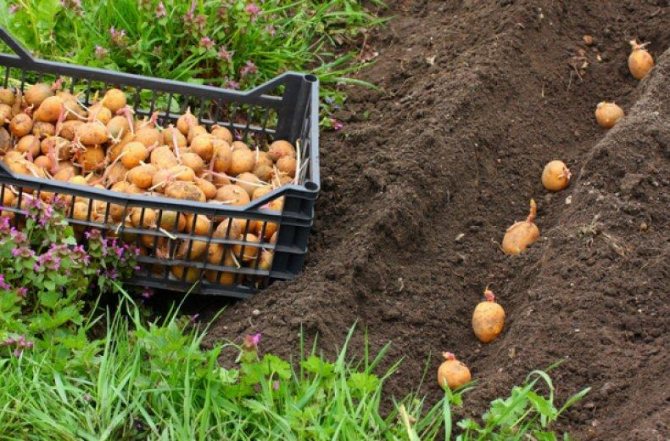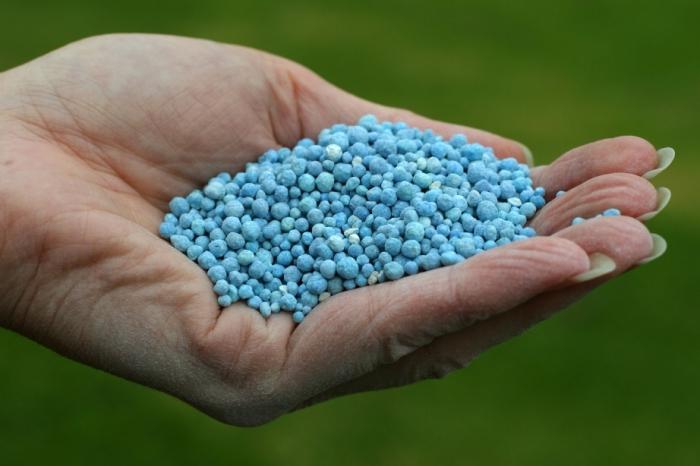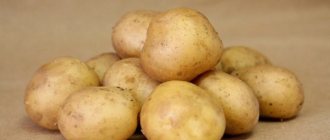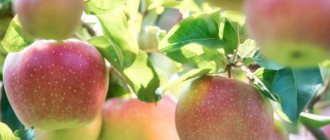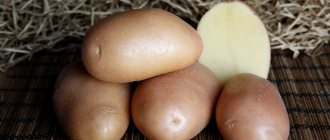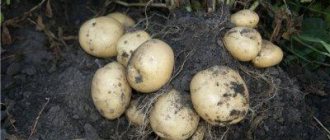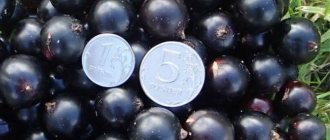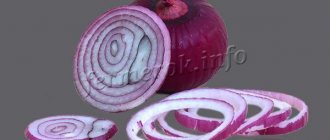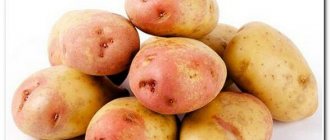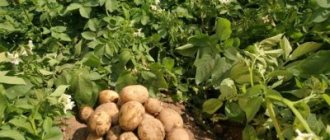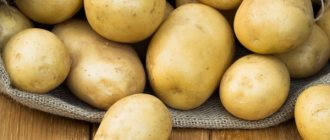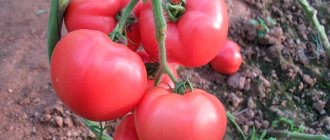Description of kiwi potato variety
According to the description of gardeners, potato bushes of the Kiwi variety reach a height of 50-80 cm. The tops are formed by straight stems with numerous shoots. The leaves have a structure characteristic of the culture, an emerald green color, jagged edges. They are distinguished by their increased roughness and the presence of numerous hairs.
The inflorescences are colored lilac. There is no amicable flowering. In cool weather, it may be completely absent.
The tubers have an unusual appearance. They are rounded or slightly elongated. The peel on them is thin, rough, mesh. Tubers are medium to large in size. As a rule, they are not small.
The pulp of the tubers is very dense, snow-white, has a slightly noticeable shade of amber.
Kiwi potatoes can be successfully grown in any region of the country. It is well adapted to various conditions. It grows in more southern regions, as well as in central Russia.
Potatoes are undemanding to soil, resistant to pests and diseases.
A warning! According to gardeners, the variety does not withstand drought. In the absence of rain for a long time, the crop needs watering.
Characteristics of the Kiwi potato variety
The potatoes of the Kiwi variety shown in the photo have conflicting characteristics in many respects. Probably, the whole point is that it has not been researched at the state level. You can get an idea of its properties from reviews of agronomists and gardeners.
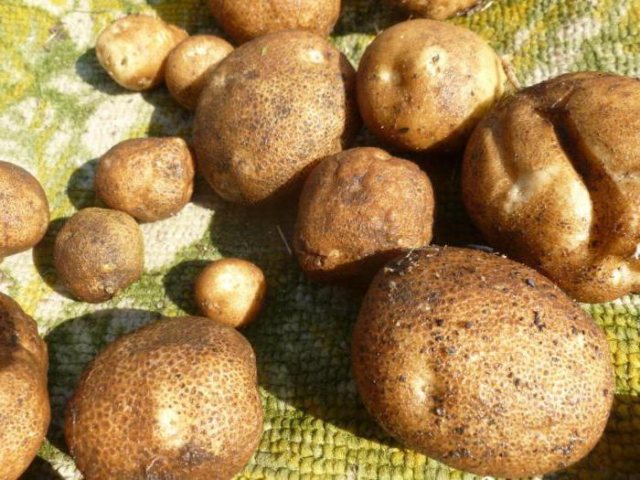
Yield
Kiwi is a fruitful variety. From 1 kg of planting potatoes, gardeners get up to 20 kg of harvest. Tubers grow large and medium. Small specimens are absent. Productivity from one bush is 3-4 kg. There is data on the collection of 400-480 kg per one hundred square meters.
Experienced gardeners believe that the yield of Kiwi potatoes can be significantly increased if the planting spacing is large - 40 x 70 cm instead of 30 x 70 cm.The highest yield is obtained when planting at 45 x 90 cm spacing.
Advantages and disadvantages
Kiwi potatoes can be characterized both positively and negatively. The main advantages of the variety are:
- disease and pest resistance;
- unpretentiousness of culture;
- high productivity;
- lack of small tubers;
- good portability;
- keeping quality in winter.
Of the shortcomings, gardeners note:
- long ripening period;
- lack of the usual taste and aroma of tubers;
- long period of heat treatment.
There are also discrepancies in taste characteristics. Some consider potatoes tasty and crumbly, others, on the contrary, tasteless and dense.
According to the description of vegetable growers, the Kiwi potato variety is used to prepare various dishes: soups, mashed potatoes. But for frying, it is not suitable. With this processing, the potatoes acquire a crispy appearance, but in the middle part they remain moist.
Kiwi Potatoes: GMO or Not
There is no definite answer to this question. Some producers consider Kiwi potatoes to be genetically modified.
Two signs, according to agronomists, indicate that this could be a GMO product:
- high yield under any conditions;
- resistance to pests and diseases.
But these are assumptions, since only laboratory studies can give an exact answer. Breeding GMO plants requires the latest equipment in laboratories, since there is an intervention in the plant genome.It is simply impossible for amateur breeders to make such manipulations without a scientific base.
Important! According to official information, only two varieties of modified potatoes were obtained in Russia: Lugovskoy and Elizaveta. They are allowed for consumption, but prohibited for cultivation.
According to other sources, Kiwi potatoes were bred as a result of crossing, useful traits were acquired from the original varieties. This statement is more plausible. The Kiwi variety is thus safe for consumption.
Testimonials
Elnara, Izhevsk
The kiwi potato tubers were brought by friends from the Moscow region. We have been growing the variety for three years now. Minimum care and every autumn - large potatoes. We have a small garden allotted for this potato, since Kiwi is not the main, but rather an additional variety. It is quite successful, it is suitable for cooking, in soups, even for frying (although they say that it is not particularly suitable). Recommend!
Valentina, Vologda
I read about Kiwi on the Internet and was eager to try it. They brought me some tubers and planted them. As for pests, I can not say anything, since Colorado beetles have not disturbed my site for two summers. But about late blight, I agree, the other varieties are at least a little, but the infection seized, but this one did not touch. The bushes are even, dense, without signs of phytophthora, and the harvest from them is always good. This year I will plant it for the second time, I will see how it will show itself this season.
Kiwi potatoes are an unusual variety that differs from traditional potatoes not only in appearance, but also in a number of their characteristics. Minimal care and high yields, coupled with an original appearance, made it popular with gardeners in a number of regions of Russia.
Landing rules
Kiwi potatoes do not require any special growing rules. Its cultivation is the same as that of other varieties.
Some gardeners use the Dutch way of growing. Two rows of tubers are planted on it every 30 cm, maintain a distance of 70 cm.Two rows again, and so on. When leaving, they do not huddle each row, but simply roll the earth on both sides.
Growing under straw is used. Tubers are planted every 30 cm, 1 tbsp is placed in each well. l. ash. Straw is laid over the tubers with a layer of 30 cm. When the potatoes grow to 20-30 cm, straw is laid, creating a hill 20 cm high. Hilling is not carried out. A mound of straw replaces the soil when hilling. Make sure that the straw or hay is always wet. When harvesting, it is enough to move the hay, and the harvest will already be in sight.
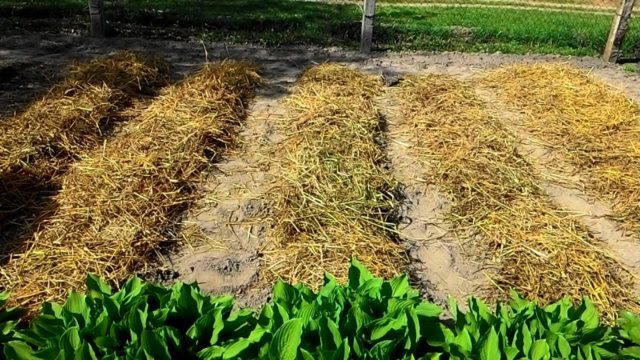

Recommended timing
Kiwi potatoes are recommended to be planted from the end of April or in the first decade of May. It all depends on the region of cultivation and climatic characteristics.
The optimal conditions are considered to be the time when the soil warms up to a depth of 12 cm to + 7-9 degrees, and the threat of frost passes.
Soil preparation
Kiwi grows in any soil. But the greatest yield is obtained on sandy loam, light in composition soil.
Recommend a place for planting and prepare the soil in the fall. During this period, the beds are dug up, organic fertilizer is applied. In the spring, it is advised to add humus, while digging, mineral compositions containing potassium and phosphorus are introduced.
How to plant correctly
It is recommended to follow the rules for planting potatoes:
- for growing you need to choose a sunny place;
- planting tubers that have begun to sprout;
- bookmark for germination three weeks before planting;
- plant tubers at a distance of 30 cm;
- leave up to 70 cm between adjacent rows;
- deepen by 7-10 cm, depending on the severity of the soil.
Actinidia care
When actinidia grows a little and gets stronger, temporary supports are replaced with permanent ones. It is preferable to initially plant the actinidia near the gazebo, pergola or fence, as we already wrote above, - in this case, it will creep up.As a support, you can use a wire fixed on pillars with a height of 2.5 cm and stretched in 3-4 rows.
Actinidia should stand on the side of the support, where a shadow falls from it during the day.
The main shoot is attached to the structure vertically, all new ones are attached horizontally. In order for new shoots of the plant to develop, it is advisable to cut off the tops of already grown shoots when they reach a meter length.
In order for actinidia to bear fruit, you need to plant male and female plants in a ratio of 1: 4.
In late March - early April, in the place where the liana grows, mineral fertilizing is carried out at the rate of 35 g of nitrogen-containing fertilizers and 20 g of potassium and phosphorus preparations per 1 square meter of area.
Before flowering, i.e. closer to May, actinidia needs to be fed with rotted manure, spreading it around the bush with a layer at least 5 cm thick. During flowering, it is important to protect the plant from recurrent frosts. To do this, before lowering the temperature, it is covered with a film.
For the second time, the liana is fed with organic matter after flowering: for this, chicken (1:20) or cow (1:10) dung diluted in water is used at the rate of 20 liters per vine. If your actinidia grows on fertile soil, then two organic fertilizing per season will be enough for it.
Fertilizing with mineral fertilizers is repeated at the stage of fruit setting, while the proportions of the preparations are halved. As the soil dries up, the vine is watered.
In the fall, the vine is prepared for the upcoming winter: the shoots are shortened to 30-40 cm, dry and broken branches are removed. The roots of actinidia are covered with mulch for the winter, especially for young plants.
Growing features
When growing potatoes of the Kiwi variety, presented in the photo above, and the description of agronomists, a standard set of activities is carried out: loosening, weeding, hilling, feeding. When all of the above techniques are performed, the variety will bestow a high yield.
Watering schedule
Large quantities of potatoes cannot be watered by hand. Gardeners then rely on the weather and climate. For small plantings in the country, Kiwi potatoes are watered 3 times during the growing season. It is recommended to spill soil to a depth of 40 cm.
Loosening, weeding, hilling
Like any potato, Kiwi must be hilled. As a result, the culture forms additional roots, which improves the nutrition of the bush, makes it possible to form tubers.
Before and after hilling, it is necessary to remove weeds, as they thicken the plantings. Loosening of the soil is carried out as needed.
Do I need to feed
Vegetable growers recommend feeding potatoes in early June. Then two more feeding after 10 days during the warming period. Mixtures containing all three elements are used: nitrogen, potassium and phosphorus.
Advice! Ash can be used as a potash fertilizer.
Harvesting
The collection of "Kiwi" normally starts at the end of September-beginning of November. This variation is due to different growing conditions. Harvesting should be done when the tubers are ripe. This can be determined by signs (the tops turn yellow, etc.), or you can dig out 1 bush for verification.
After harvesting, dry the tubers, and then sort and sort the missing fruits. Place the selected potatoes in a cool place.
Important:
do not put potatoes in several layers, because the lower ones can be poorly ventilated, which means they disappear. After a couple of months, re-sort the potatoes.
Pests and diseases
Kiwi potatoes are resistant to pests and diseases. The main pest of potatoes is the Colorado potato beetle; this variety does not touch. The reason for the phenomenon:
- Rough leaves, their hair structure. This foliage structure does not allow beetles to lay eggs.
- The potato variety contains bio-fiber. The pest's organism cannot digest it.
The variety is resistant to diseases affecting the culture. He does not suffer from late blight and other lesions.
Breeding history
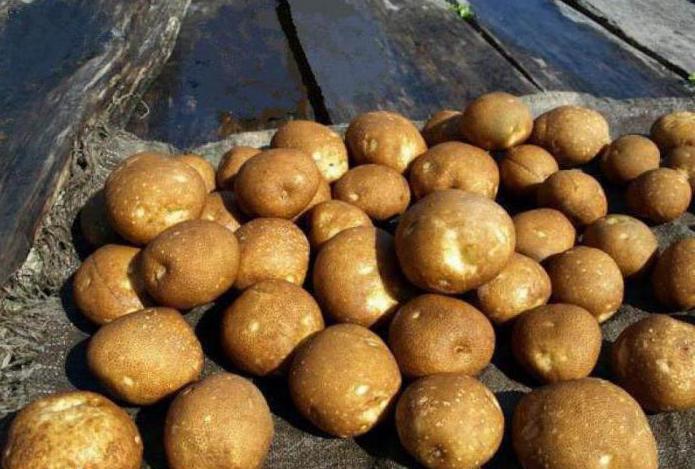

Since Belarus is considered the homeland of most varieties of this vegetable, many decided to attribute the Kiwi potato variety to the merits of Belarusian breeders. In fact, this is not so - this product was introduced in Russia. For the first time, Kiwi was grown by amateur gardeners in the Kaluga region, but this variety has not yet been included in the State Register. It is the complete absence of state tests on potatoes that led to the fact that all information about it is based only on private observations.


